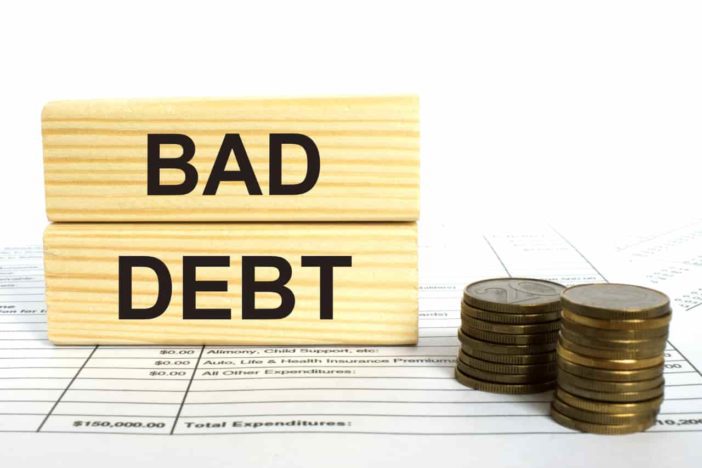Debt can be distinguished as “good” and “bad”. Most debts are considered bad. One can categorically disagree with this. The point is, if you have the emotional maturity and can control your emotions, then you can control your money as well. To help you distinguish between types of debt, remember that a good one puts money in your pocket and makes you rich while bad debt takes money out of your pocket and makes you poor.
In particular, good debt is one that someone else pays for you, and bad is one that you have to pay off yourself. An example of good debt is a rental property loan where the tenant pays the rent to cover your mortgage payments and other expenses or borrow money online instantly options that some services offer. Such debt puts money in your pocket.
An example of bad debt is a car loan or a mortgage for your personal house. Such debt takes money out of your pocket. The rich have more debt than the poor. The difference is that the rich prefer to have good debts while the poor and the middle class have bad debts. You must handle any debt, good or bad as you would a loaded gun and with the same respect
People who do not respect the power of debt often suffer severe financial injuries which are sometimes even fatal. People who respect and harness the power of debt can get rich beyond expectations. Debt has the power that can make you very rich but the same power can make you very poor.
What is the Difference Between Good and Bad Debts?
When you review your accounts every month, you may feel overwhelmed by the amount of money you are spending to pay off your credit. Sometimes debt can seem like a trap you just want to get out of. However, not all credits are bad. When a lender looks at your credit report to find out what accounts you have, they will look at some debts more favorably than others. If you are focused on getting out of debt, you first need to understand which of them are considered bad and which are good. This way, you can prioritize your loan to get rid of the bad ones in the first place.
Good Debts
Some of your debt can be viewed as an investment. You are probably thinking, “How can such a terrible thing as debt be considered an investment?” If you have borrowed to buy something that will increase in value and can contribute to your overall financial health, then the debt is good.
Mortgage
One example of good debt is a mortgage. You are creating equity in your home, and the money you pay for the home can be seen as an investment. Many people believe that renting an apartment is just a waste of money while buying your own home with a mortgage increases capital.
Education Loans
Another example is a loan for education. This loan can help you boost your earning potential which may justify the need to borrow money. The US Department of Education estimates that those with a bachelor’s degree earn approximately $ 1 million more in their lifetime than a non-college graduate.
However, you should still limit the amount of money you borrow. Sometimes you can turn a student loan into bad debt. Don’t borrow more than you need to just to have extra money to spend.
Car Loans
Car loans can be good debt if you can get a reasonable annual interest rate and the car you buy retains its value after the loan is paid off. In addition, using a car loan to get a car can open up the opportunity for a higher-paying job that you might not otherwise have thought of due to transportation problems.
Bad Debts
When you use debt to fund things that can be consumed, you are taking on bad debt. It is a type of debt that creates an unhealthy financial situation.
Credit Cards
A credit card is often considered a bad debt due to the nature of the merchandise used to purchase credit cards. You should never use it to buy everyday items like clothes or food. If you are using a credit card for these purchases, it must be done on purpose: for example, to be rewarded with the knowledge that you will pay off your balance in full on time.
You might be tempted to pay for your vacation with your credit card because you’ve convinced yourself that spending away from home will help you be more productive when you return. However, vacation has no tangible value even if it does have certain benefits.
High-Interest Loans
Payday loans and some personal loans can charge incredibly high-interest rates. The Consumer Financial Protection Bureau notes that some payday loans may charge an annual rate approaching 400% if you factor in the fees you pay to get the loan. Although many personal loan lenders advertise rates below 10% per annum, they leave these rates for borrowers with excellent credit history. Private loans for bad credit history can have an annual rate of over 35%.
While some debt falls into the black zone, good debt is simply defined as money borrowed to pay for items that you really need or rate them for value. Bad debt, in turn, is charged for items you need that are usually worthless. To help you make this distinction, it is important to be able to distinguish between wants and needs.
Before you lend money, you need to determine if the money will go towards something that will have a positive or negative impact on your overall financial situation. Ultimately, debt isn’t always bad. It is important how to use it. This happens when you buy something that not only does not depreciate but increases in value over time. For example, you buy a painting from an author who is quoted. The very next day you can resell it for a higher price. A painting is something that goes up in value. It can even be classified as an asset, or you buy something that will make you money.
Even buying a computer on credit can often be attributed to investment. Of course, it will lose some of its value as a refrigerator or car. But if the computer allows you to do the necessary things and make money online on it (do remote work, online transfers, compile reports for those who are willing to pay for it, etc.), it will bring you money. Then its purchase in credit can also be considered “good” debt. By learning how to distinguish between “bad” and “good” debts, learn how to spend your finances wisely.



